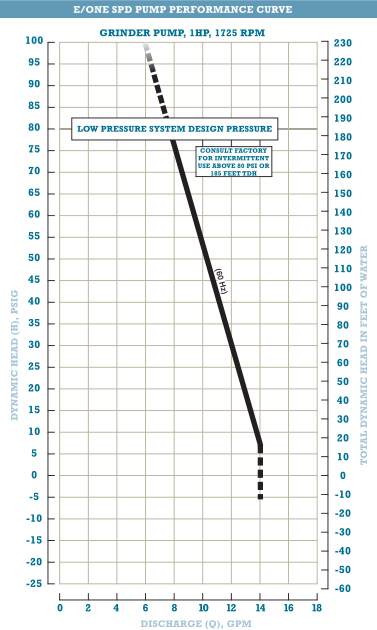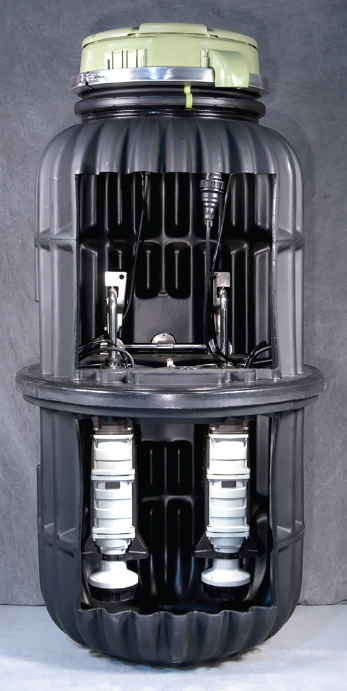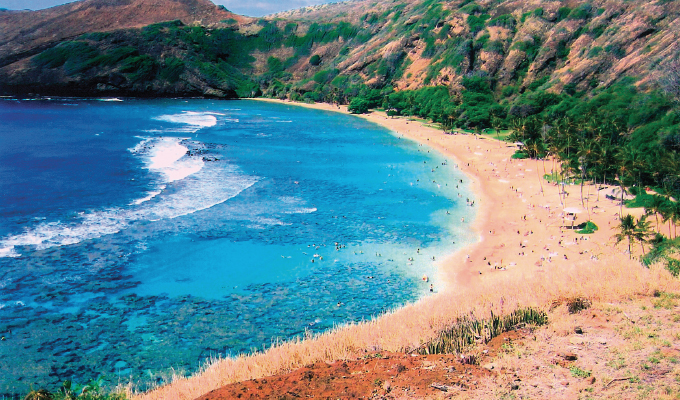By Joseph Harmes
The Hawaiian Islands encapsulate every conceivable wastewater infrastructure challenge. High water tables requiring expensive dewatering or inviting contamination from septic tanks, which—by design—leak. Excavations of great depth for inclines of large-diameter gravity sewer pipe. The threat of inflow and infiltration from heavy rains. Beds of lava, one of nature’s most impenetrable surfaces. Undulating terrains. Preservation of archaeological sites, fragile tropical vegetation, ocean fronts, and sacred anchialine ponds. Notably higher costs for labor, equipment and materials than the mainland.
Then there are the hurdles posed by some of the state’s tiniest yet most visited tourist attractions–Hanauma Bay, Sandy Beach and Waim nalo State Park—along a scenic 7.5-mile stretch of the Kalaniana’ole Highway on O’ahu.

ADDRESSING THE PROBLEMS OF GRAVITY SEWERS
In each location, the use of gravity sewers would be environmentally disruptive, prohibitively expensive or physically impossible given their function to transport wastewater downhill, not up steep inclines. Septic already had proven a failure as there was not the space nor soil conditions for adequate drain fields to prevent nitrogen and phosphorous from threatening marine life and coral reefs. Nor could Hawaii consider the antiquated technology of cesspools (technically, a hole for untreated human waste) as it has passed legislation to eliminate the 88,000 already imperiling its groundwater.
Authorities opted to trial the All-Terrain Sewer® (ATS) developed by Environment One Corporation (E/One) “for the city to be able to understand how these things work and how dependable they were,” says Paul Scott of Engineered Systems in Kailua.
The ATS represents a more cost-effective alternative to expensive gravity and is fiscally competitive with the installation and subsequent maintenance costs associated with the current generation of nitrogen-reducing septic tanks. Found on almost every continent, its pressurized, inflow-and-infiltration free small-diameter pipes are conduits to conventional wastewater treatment plants. This go-to wastewater infrastructure has cleansed and protected many other islands including Martha’s Vineyard, the Florida Keys, and, notably, Alcatraz.
A DELICATE, PROTECTED, AND CHALLENGING ENVIRONMENT
In 2009, some E/One pumps were installed at Hanauma Bay in the Hawaii Kai neighborhood of East Honolulu. This popular backdrop for TV and movie productions is both a nature preserve and a marine life conservation district with about 400 species of fish known to inhabit the bay. It attracts about 90,000 monthly visitors—and their bathroom needs.
Given its location between a volcanic crater and the Pacific Ocean, the ATS was the magic carpet required to convey wastewater from the restroom facilities up and over to an existing gravity line, then to a wastewater treatment plant. This was made possible by a grinder pump, whose primary component is a 1 horsepower, semi-positive displacement pump. Its robust torque can propel wastewater for a distance of more than two miles—or even vertically 186 feet.
“It was used there because of the low-flow, high-head requirement. The elevation difference is quite steep,” says Scott.

GRINDER PUMPS ADDING TO THE PLAN
Subsequently, other grinder pumps were installed to overcome the similar conditions at comfort stations in the beachfront Waim nalo District Park (Waim nalo Beach is regarded as the longest stretch of sandy shoreline on O’ahu. In Hawaiian, Waim nalo means “potable water.”).
Grinder pumps also anchor the comfort stations at Sandy Beach, close to Hanauma Bay, which was the childhood body surf break of O’ahu-born President Barack Obama.
The same high-head advantage of an All-Terrain Sewer dove-tailed nicely with the expansion of a thirty-unit affordable senior housing project in Hilo.
“The Mohouli Street projects are located below the county’s gravity system so the only alternative to service the site was to either obtain a variance and install septic systems or to install pump stations and pump up to the county’s existing gravity sewer line,” says Nancy Burns in Kailua Kona, principal of Nancy E. Burns PE, LLC, the project engineer.
“The E/One ATS was chosen as it was better from a cost and environmental standpoint. We also felt it would require less maintenance than a septic system and would consume less area on the project site.”
FOR MORE INFORMATION
With corporate headquarters in New York and regional offices and distribution throughout the industrialized world, Environment One Corporation (E/One) is a manufacturer and provider of products and services for the disposal of residential sanitary waste and utility systems for the protection and performance optimization of electric utility assets. For more information, visit www.eone.com.
MODERN PUMPING TODAY, July 2020
Did you enjoy this article?
Subscribe to the FREE Digital Edition of Modern Pumping Today Magazine!



